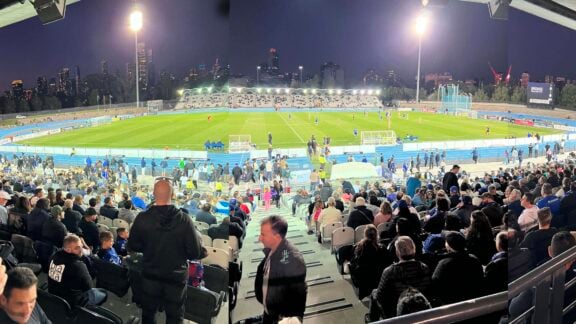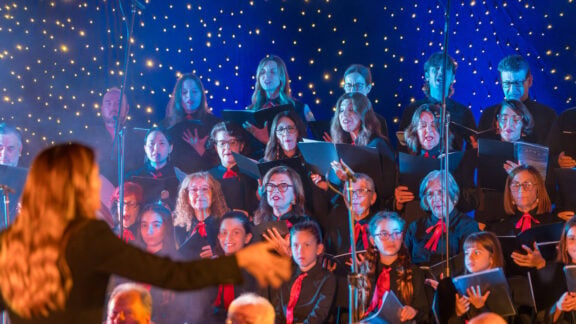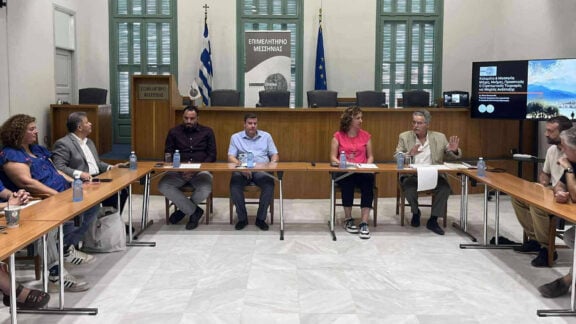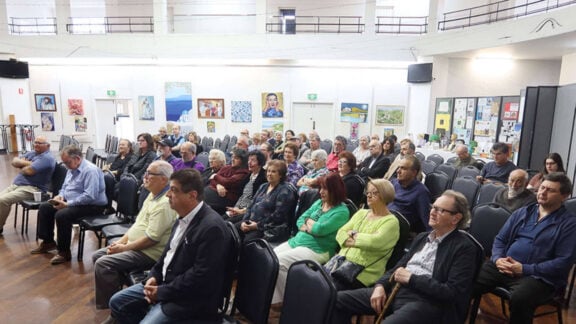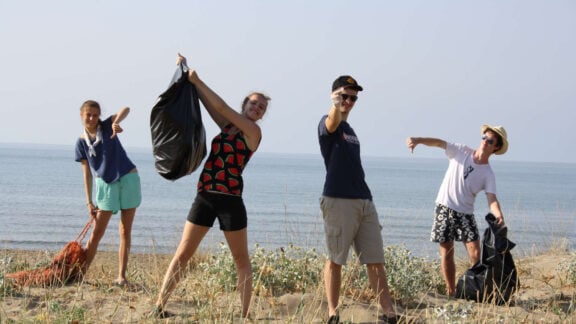Recently, Marc Van Den Reeck, the former Ambassador of Belgium to Greece, visited Lemnos to view its connection to the Gallipoli campaign. He followed the advice of his friend, Robert Peck, the former Canadian Ambassador to Greece. Mr Peck has long been interested in promoting awareness of the role of Lemnos in the Gallipoli campaign amongst Canadians. He also played an essential role in creating the Allied nurses memorial at Lemnos’ Portianou Military Cemetery, unveiled during the Centenary of the Gallipoli campaign in 2015.
Mr Peck requested my assistance for the former Ambassador’s visit. Soon, two of my friends, Haroula Koutsapli and her husband, Mario Sanz, agreed to take him on a guided tour of Lemmos’ Gallipoli campaign sites.
Haroula’s family have their roots in Lemnos but lived for a time in regional Victoria before returning to Europe. Their summer residence – the former home of their parents – is in the village of Tsimandria, visited, written about and photographed by the Anzac soldiers and nurses in 1915. As a former member of the Spanish armed forces, Mr. Sanz has a deep interest in military history, including that of Lemnos and the Gallipoli campaign.
Their tour drew on my historical volume – Lemnos & Gallipoli Revealed.
Mr Sanz began the former Ambassador’s tour of Lemnos’ Gallipoli sites with a visit to Portianou’s Historical Information Centre, where, after viewing a short video, he provided an overview of the Gallipoli campaign and Lemnos’ part in it. They then proceeded to Portianou’s Allied War Cemetery, where they viewed the graves of the two Canadian nurses buried on Lemnos, the only female Allied service personnel to have died during the campaign.
He also viewed and took an interest in the curious grave of a solitary Ottoman officer, Captain Francois Balli.

His gravestone lists him as a “Turkish Forces” member who died on November 25, 1918. Through my research, I have speculated that as his death took place after the signing of the Armistice of Mudros, Captain Balli may have been part of the Ottoman delegation who became ill on Lemnos after an influenza epidemic spread across the region in late 1918. Influenza also killed two Australian sailors – the last Australians buried on Lemnos.
His burial in this Christian cemetery also leads one to believe he may have been an Ottoman Christian. The former Ambassador suggested he may have been one of the many Levantines (or European Ottoman families) long resident in the Ottoman Empire.
Mr Sanz also pointed out the former home of the French Consul on Lemnos in Portianou village. There has been much local speculation that Winston Churchill visited this during the Gallipoli campaign. Still, the historical evidence does not support this.
The tour then made its way to the Turks Head Peninsula (referred to locally sometimes as Pounda), where the Allied – and Anzac presence was prominent during the campaign. They visited the site of the former Allied military hospitals, the excellent water desalination plant and the chapel of Agios Nikolaos, near where the Australian nurses came ashore on Lemnos in August 1915 to commence their service there. Their tour took them to the remains of the Russian Cemetery for White Russian refugees from the end of the Russian Civil War.
Afterwards, they travelled to the opposite side of the Mudros’ bay to Mudros town. They visited the central Allied military cemetery there, the first created by the Allies on Lemnos during the campaign. Mr Sanz pointed out the many Allied graves in the cemetery, including those of the Indian Army. He also pointed out the White Russian refugees from the Russian Civil War buried there.
The former Ambassador was surprised by one of the later graves in the cemetery of the British Seaman Ronald Thomson, a 19-year-old Royal Navy sailor from Durham who died on Christmas Day 1944, two months after the liberation of the Island from German occupation in the Second World War. The former Belgian Ambassador was also surprised by the prominent French Gallipoli Memorial erected in this Cemetery by France in recognition of their significant part in the campaign.
Their visit to the Australian Pier Memorial, north of Mudros, was a highlight. The pier commemorates the erection of the original pier at this location by Australian troops in March 1915, some of the first Australians to arrive on Lemnos during the campaign. The Memorial was erected following my research and the Lemnos Gallipoli Commemorative Committee proposal, supported by the local Lemnos authorities and the Victorian State Government.
Mr Sanz and Ms Koutsapli said this Memorial was the commencement of the new Australian Government-funded Lemnos Remembrance Trail, with the Australian Governor-General and Hellenic Republic President inaugurating the trail by turning the first sod of earth.
The tour was concluded with some Lemnian hospitality and food, firstly at one of the many restaurants at the port of Mudros, followed by Lemnian home cooking at the Sanz-Koutsapli home in the village of Tsimandria, in whose streets and laneways the Allies walked in 1915-16.
The former Ambassador expressed his happiness with the tour and would promote Lemnos and its Anzac connection, including on his website.
Jim Claven is a historian, published author and Secretary of the Lemnos Gallipoli Commemorative Committee.
He acknowledges the essential contribution of both Haroula Koutsapli and Mario Sanz to this article, especially their tour photographs, and he may be reached at jimclaven@yahoo.com.au

